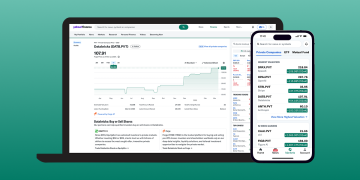Introduction
Monetary policy plays a critical role in shaping the economic environment and financial markets, influencing everything from inflation rates to exchange rates, and the broader investment landscape. In the Asia-Pacific (APAC) region, central banks are key players in managing monetary policy, with their decisions on interest rates, quantitative easing, and other policy tools having far-reaching consequences on markets both within the region and globally.
The Asia-Pacific region is home to several of the world’s largest and most influential economies, including China, Japan, India, and Australia. Each of these nations employs its own approach to monetary policy, but their actions collectively have a significant impact on the financial performance of regional and global markets. This article delves into how changes in the monetary policies of APAC countries affect market performance, including stock markets, currency values, bond yields, and commodity prices.
Section 1: Key Monetary Policy Tools and Their Impact
Monetary policy in the APAC region, as elsewhere, primarily focuses on managing inflation, controlling economic growth, and stabilizing financial systems. Central banks in the region utilize various tools to achieve these objectives, with interest rates and open market operations being the most commonly used methods. Other tools such as quantitative easing (QE) and forward guidance are also becoming more prevalent.
1.1 Interest Rates
The interest rate set by a country’s central bank is one of the most direct tools for influencing economic activity and market performance. A change in interest rates has a wide range of effects, from influencing consumer borrowing to determining the attractiveness of a country’s currency. In the APAC region, central banks such as the Reserve Bank of Australia (RBA), the Bank of Japan (BoJ), the People’s Bank of China (PBOC), and the Reserve Bank of India (RBI) make decisions about interest rates based on their economic priorities.
- Interest Rate Cuts: When central banks cut interest rates, borrowing becomes cheaper, which tends to stimulate investment and consumer spending. In turn, this can lead to higher corporate earnings, driving up stock prices. However, it may also lead to concerns about inflation, particularly if the rate cuts are too aggressive. Market Impact: In general, lower interest rates tend to weaken a country’s currency, as investors seek higher returns in countries with more attractive interest rates. This can lead to capital outflows and a weaker currency, which in turn impacts global investors with currency risk exposure. Additionally, equity markets may initially respond positively to rate cuts, but if the rate cuts signal economic weakness or concerns about inflation, stock markets could suffer long-term effects.
- Interest Rate Hikes: When a central bank raises interest rates, borrowing becomes more expensive, slowing down economic activity. Higher rates tend to be a response to rising inflation or an overheating economy. While rate hikes help control inflation, they can also dampen investor sentiment as companies face higher financing costs, which can negatively affect stock market performance. Market Impact: An increase in interest rates often strengthens the country’s currency, as higher rates make it more attractive for foreign capital. However, the negative effects on equity markets can be significant, especially in sectors reliant on cheap borrowing, such as real estate and technology. Higher rates can also lead to a rise in bond yields, which can make equities less attractive in comparison.
1.2 Quantitative Easing (QE) and Asset Purchases
Quantitative easing involves central banks purchasing government bonds or other financial assets to inject liquidity into the economy. This policy is typically used when interest rates are already near zero, and the central bank needs to provide additional stimulus.
- QE’s Effect on Asset Prices: By increasing the money supply, QE can drive up asset prices, particularly in equity and bond markets. It can lead to a rise in stock prices as investors search for higher returns, given the lower yields in the bond market. Market Impact: In the APAC region, countries like Japan and China have used QE to combat deflationary pressures and stimulate economic growth. For example, Japan’s BoJ has engaged in aggressive QE policies to support the economy and financial markets. The result has been a gradual increase in asset prices, including equities, as investors look for returns in an environment of low yields.
- Currency Depreciation: QE can also lead to the depreciation of a country’s currency, as an increase in the money supply typically weakens the currency. This can be beneficial for export-driven economies, but it can create challenges for investors in international markets, particularly in countries where exchange rate risk is significant.
1.3 Forward Guidance
Forward guidance is a policy tool where central banks communicate their future plans for monetary policy to guide market expectations. The BoJ and the RBA, for example, have used forward guidance to signal their intentions regarding interest rates or QE, influencing investor behavior in advance of actual policy changes.
- Impact on Investor Expectations: Clear and consistent forward guidance can provide greater certainty for investors, allowing them to adjust their portfolios accordingly. If a central bank signals that rates will remain low for an extended period, investors may move into riskier assets like equities or emerging market debt in search of higher returns. Market Impact: Forward guidance can affect market sentiment by shaping investor expectations about future economic conditions. If a central bank signals that it plans to tighten policy or raise rates soon, markets may react by pulling out of riskier assets and moving into safer investments such as bonds or the local currency.
Section 2: Recent Monetary Policy Shifts in APAC
As of late, APAC central banks have faced unique challenges, including dealing with post-pandemic economic recovery, inflation concerns, and fluctuating global demand. Below, we examine recent policy shifts in some of the major APAC economies and their impact on financial markets.
2.1 China: Shifting Economic Focus
The People’s Bank of China (PBOC) has implemented a series of monetary policy measures aimed at addressing the dual challenges of economic slowdown and inflation. While China’s growth has slowed in recent years, its efforts to transition from an investment-driven economy to one focused on consumption have led to ongoing shifts in monetary policy.
- Interest Rate Adjustments: In response to slowing growth, the PBOC has cut interest rates several times in an effort to stimulate economic activity. However, despite these rate cuts, economic growth has remained lackluster. Market Impact: These rate cuts have helped stimulate domestic consumption to a degree, but concerns about the real estate sector and broader economic challenges have led to volatility in Chinese equities and the yuan. For global investors, changes in Chinese monetary policy can have wide-ranging implications, particularly for commodities like oil and metals, which are heavily influenced by China’s demand.
- PBOC’s Liquidity Support: The PBOC has also employed measures such as targeted liquidity support to specific sectors like real estate and small businesses, which have been hit hardest by economic downturns. This targeted support aims to stabilize key sectors without triggering excessive inflation. Market Impact: Liquidity measures can provide temporary relief to markets, but they can also create concerns about long-term market stability. Global investors in Chinese bonds, stocks, and commodities need to be particularly sensitive to these policy shifts, as they can directly affect market confidence and asset prices.
2.2 Japan: Ultra-Low Interest Rates and Yield Curve Control
Japan’s central bank, the BoJ, has long maintained ultra-low interest rates and aggressive monetary policies such as quantitative easing and yield curve control (YCC). The goal of these policies has been to combat deflation and stimulate economic growth.
- BoJ’s Yield Curve Control: Japan’s BoJ is known for its policy of controlling the yield curve, which aims to keep long-term interest rates low to encourage investment and borrowing. The BoJ has been particularly focused on achieving stable inflation, which has been stubbornly low for decades. Market Impact: The BoJ’s commitment to keeping rates low has had a profound impact on the Japanese equity market, with low rates supporting higher corporate earnings and capital expenditure. However, Japan’s bond market remains dominated by the central bank’s actions, and this has led to concerns about the distortion of market pricing.
- Currency Depreciation: Japan’s monetary policy has contributed to the yen’s long-term depreciation, which has been beneficial for the country’s export-driven economy but has created challenges for global investors looking to manage currency risks. A weaker yen can help Japanese exports remain competitive but may discourage foreign investment in yen-denominated assets.

2.3 Australia: Response to Inflationary Pressures
The Reserve Bank of Australia (RBA) has recently faced inflationary pressures due to rising global commodity prices and domestic labor market tightness. In response, the RBA has signaled its intentions to raise interest rates after a prolonged period of low rates.
- Interest Rate Hikes: The RBA began hiking interest rates in response to mounting inflation, which has led to higher costs for households and businesses. These rate hikes are aimed at cooling the economy and controlling inflationary pressures, but they have also raised concerns about the impact on economic growth. Market Impact: The immediate effect of the rate hikes has been an appreciation of the Australian dollar as investors seek higher yields. However, this shift may dampen consumer spending and business investment, leading to potential volatility in Australian equities. Additionally, global investors who are exposed to Australian bonds and commodities will need to closely monitor the evolving interest rate environment.
2.4 India: Managing Inflation and Growth
India’s central bank, the Reserve Bank of India (RBI), has faced a balancing act between fostering growth and controlling inflation, which has been exacerbated by rising food and energy prices.
- Inflation Targeting: The RBI has responded to inflationary pressures by tightening monetary policy and raising interest rates. These hikes are intended to rein in inflation while maintaining growth momentum. Market Impact: The tightening of monetary policy has led to higher bond yields and currency appreciation, which has been positive for foreign investors in India. However, the higher borrowing costs may slow down domestic consumption and business investment, creating potential challenges for sectors reliant on credit.
Section 3: Conclusion
Monetary policy changes in the Asia-Pacific region have a profound effect on market performance, with direct impacts on interest rates, exchange rates, commodity prices, and overall market sentiment. Central banks in APAC countries, including China, Japan, India, and Australia, use various policy tools to stabilize their economies and achieve growth targets. For global investors, understanding the nuances of these policy shifts is essential for navigating potential market volatility.
Changes in interest rates, quantitative easing measures, and forward guidance can significantly impact investor behavior, asset prices, and currency movements. Investors should closely monitor APAC central bank decisions and adjust their portfolios accordingly to capitalize on opportunities while managing risks in the dynamic and complex economic environment of the Asia-Pacific region.





























